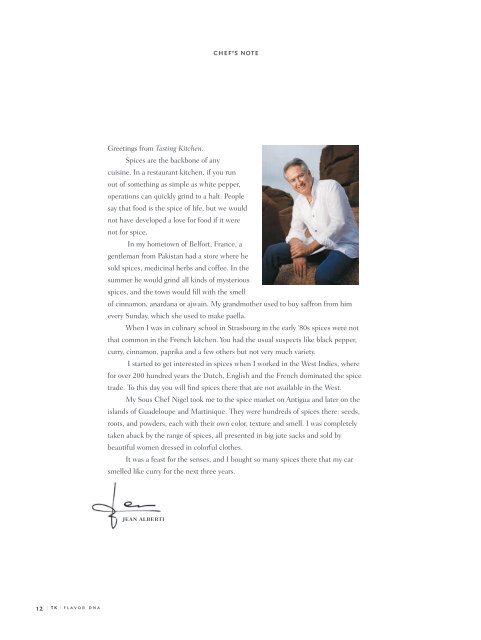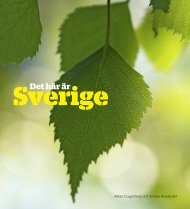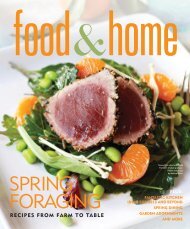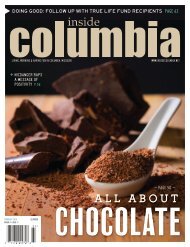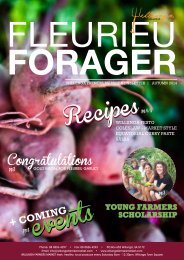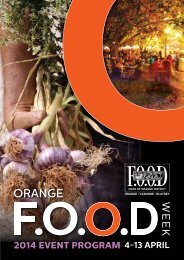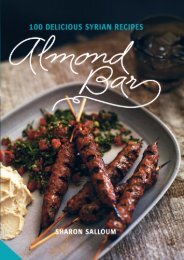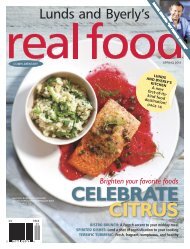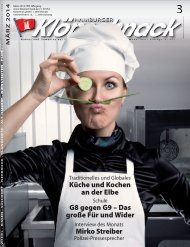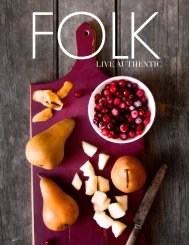Tasting Kitchen
Welcome to Tasting Kitchen. Season’s Greetings – or should I say Seasonings Greetings! This holiday TK issue is full of spices and flavorings. We talk to four talented and ambitious chefs about the flavor profile – or Flavor DNA – of dishes from India, Sichuan, Vietnam and the Isaan region of Thailand. Think cardamom, black salt and saffron, red peppercorns, red chilies and green chilies, dill, Kaffir lime, lemongrass, coriander, galangal and turmeric. We take a look at spices in history, and how even back in the Middle Ages savvy marketers knew the value of a good story. Spice merchants claimed that birds used cinnamon sticks to make giant nests in the cliffs above beaches in India, which “cinnamon hunters” then plotted to obtain. Today India is still associated with the world’s best spices. In this issue, for our first Tasting Destinations feature, TK’s Director of Photography David Hartung and Senior Writer Lucy Morgan traveled to Old Delhi to visit the world’s largest spice market and to New Delhi to visit one of the world’s top restaurants for modern Indian cuisine. One of our featured wines is the peppery Austrian Grüner Veltliner. We also talk to a New Zealand Wine Master about what makes great wine great, and to a leading French Champagne Chef de Cave about the value of patience and restraint. There are also some crabs running loose in the issue. A master chef in Macau shares his recipe for Quinoa Lobster Salad while five more from Hong Kong and Singapore share their favorite crab dishes and culinary musings. Happy Holidays,
Welcome to Tasting Kitchen.
Season’s Greetings – or should I say
Seasonings Greetings!
This holiday TK issue is full of spices and
flavorings.
We talk to four talented and ambitious
chefs about the flavor profile – or Flavor DNA
– of dishes from India, Sichuan, Vietnam and
the Isaan region of Thailand. Think cardamom,
black salt and saffron, red peppercorns, red
chilies and green chilies, dill, Kaffir lime,
lemongrass, coriander, galangal and turmeric.
We take a look at spices in history, and
how even back in the Middle Ages savvy marketers knew the value of a good story.
Spice merchants claimed that birds used cinnamon sticks to make giant nests in the
cliffs above beaches in India, which “cinnamon hunters” then plotted to obtain.
Today India is still associated with the world’s best spices. In this issue, for
our first Tasting Destinations feature, TK’s Director of Photography David Hartung
and Senior Writer Lucy Morgan traveled to Old Delhi to visit the world’s largest
spice market and to New Delhi to visit one of the world’s top restaurants for modern
Indian cuisine.
One of our featured wines is the peppery Austrian Grüner Veltliner. We also
talk to a New Zealand Wine Master about what makes great wine great, and to a
leading French Champagne Chef de Cave about the value of patience and restraint.
There are also some crabs running loose in the issue. A master chef in Macau
shares his recipe for Quinoa Lobster Salad while five more from Hong Kong and
Singapore share their favorite crab dishes and culinary musings.
Happy Holidays,
You also want an ePaper? Increase the reach of your titles
YUMPU automatically turns print PDFs into web optimized ePapers that Google loves.
chef’s note<br />
Greetings from <strong>Tasting</strong> <strong>Kitchen</strong>.<br />
Spices are the backbone of any<br />
cuisine. In a restaurant kitchen, if you run<br />
out of something as simple as white pepper,<br />
operations can quickly grind to a halt. People<br />
say that food is the spice of life, but we would<br />
not have developed a love for food if it were<br />
not for spice.<br />
In my hometown of Belfort, France, a<br />
gentleman from Pakistan had a store where he<br />
sold spices, medicinal herbs and coffee. In the<br />
summer he would grind all kinds of mysterious<br />
spices, and the town would fill with the smell<br />
of cinnamon, anardana or ajwain. My grandmother used to buy saffron from him<br />
every Sunday, which she used to make paella.<br />
When I was in culinary school in Strasbourg in the early ‘80s spices were not<br />
that common in the French kitchen. You had the usual suspects like black pepper,<br />
curry, cinnamon, paprika and a few others but not very much variety.<br />
I started to get interested in spices when I worked in the West Indies, where<br />
for over 200 hundred years the Dutch, English and the French dominated the spice<br />
trade. To this day you will find spices there that are not available in the West.<br />
My Sous Chef Nigel took me to the spice market on Antigua and later on the<br />
islands of Guadeloupe and Martinique. They were hundreds of spices there: seeds,<br />
roots, and powders, each with their own color, texture and smell. I was completely<br />
taken aback by the range of spices, all presented in big jute sacks and sold by<br />
beautiful women dressed in colorful clothes.<br />
It was a feast for the senses, and I bought so many spices there that my car<br />
smelled like curry for the next three years.<br />
JEAN ALBERTI<br />
12<br />
| TK | flavor dna


